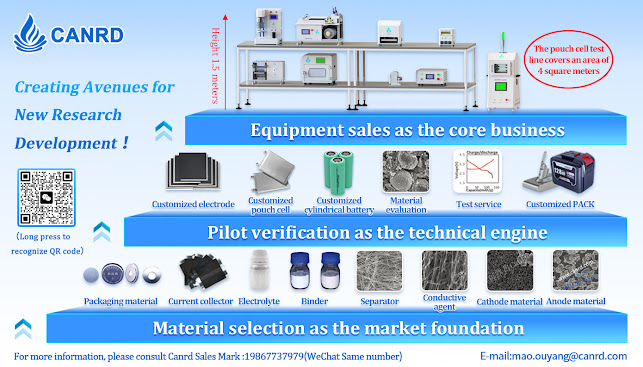1.High energy density system battery
1.1.Energy Density↗ ,Required Capacity↗, Voltage Platform↗,Weight↘,Volume↘
1.2.Set goals: (1) capacity, (2) energy density
1.3.Mass Energy Density = Capacity * Voltage Platform / Weight (Wh/kg)
Volumetric Energy Density = Capacity * Voltage Platform /Volume (Wh/L)
1.4.Material
1.4.1.Cathode Materials
1.4.1.1.In general, lithium cobalt oxide materials have high gram capacity, the highest voltage platform, the highest compaction density, and therefore the highest energy density.
1.4.1.2.At present, lithium cobalt oxide is widely used in consumer battery products, and mobile phone batteries are basically made of lithi um cobalt oxide as cathode materials.
Note: This table is an early reference book for lithium-ion batteries, and there have been many improvements and upgrades in recent years, such as:
(1) At present, the maximum charging voltage of lithium cobalt oxide has been increased to 4.48~4.5V, the gram capacity has also been increased to ~185mAh/g, and the voltage platform has also been increased;
(2) In terms of price, the price of LFP has dropped to less than 100,000 yuan, and lithium manganese oxide has dropped to less than 50,000 yuan
1.4.2.Anode Materials
The silicon anode has the highest theoretical capacity, and the current commercially mature materials are mainly graphite and lithium titanate anode;
Graphite has different capacities such as 330, 340, 350, 360, etc., and the graphite capacity of 360mAh/g is the highest;
Graphite also has 1.5, 1.55, 1.65, 1.75g/cm3 and other different compacted graphite, the larger the compaction, the higher the energy density.
1.4.1. Separator
1.4.1 .1 PP separator is cheaper and has a higher melting point than PE separator, but due to the limitation of the manufacturing process, the thinnest thickness is currently 12um;
1.4.1.2 The PE separator has a more uniform pore distribution, and the thickness
of the separator can be thin, and there is currently a 5um separator commercialized;
The thinner the separator thickness, the smaller the volume, and the higher the energy density of the battery.
1.4.3.Conductive Agents
The conductive agent has developed from the traditional conductive agent to a new type of conductive agent with nanoscale, high aspect ratio, high BET and high conductivity.
The reduction of the addition amount can effectively increase the proportion of active materials and improve the energy density of the battery.
CNT is currently widely used, with the characteristics of low addition amount and high conductivity, and is suitable for high energy density applications.
1.4.4.Adhesives
1.4.4.1.The role of the adhesive: the connection between the particles and the current collectors;Adhesives cannot effectively provide energy, so under the condition of ensuring basic adhesion, the less the amount of adhesive added, the higher the energy density of the battery.
1.4.4.2.The use of adhesives with large molecular weight and good adhesion can reduce the amount of use and improve the energy density of the battery under the condition of ensuring adhesion.
1.4.5.Aluminium plastic film, foil and tabs
1.4.5.1.Aluminum-plastic film: 88, 113, 152um, etc
1.4.5.2.Copper foil: 5, 6, 8, 9, 12um, etc
1.4.5.3.Aluminum foil: 9, 10, 12, 14, 16um, etc
1.4.5.4.Tabs: 0.08, 0.1, 0.2mm
1.5.Design
The higher the compaction density, the smaller the volume occupied;
The larger the coating weight, the smaller the proportion of auxiliary materials such as current collectors and separators, the smaller the number of layers, and the smaller the volume;
Increasing compaction and coating weight can both effectively improve the energy density of the battery.
The smaller the N/P ratio, the less excess anode material is required, resulting in reduced anode volume.
As the battery model increases in size, the proportion of volume occupied by auxiliary materials decreases.
Reducing the N/P ratio and increasing the cell size can effectively improve the energy density of the battery.
1.6.Coating
1.6.1.Transfer coating:The equipment is cheap and easy to operate .The thickness is not easy to control, and the coating speed is small
1.6.2.Extrusion coating:Controlled the coating thickness of the equipment, and the coating speed is fast (70m/min).The equipment is expensive and the cleaning is complicated
Adopted extrusion coating, with good thickness uniformity and high weight consistency;
The coating weight fluctuates less, which can further reduce the amount of negative electrode and improve the energy density of the battery.
1.7.Rolling and Formation
1.7.1.The rolling and forming process has a great impact on the thickness and capacity consistency of the battery, and control of related processes can effectively improve the capacity and thickness consistency of the battery, which is convenient for improving the energy density of the battery.
1.8.Energy density calculation method
Remarks: 455090-2.3Ah pouch battery, positive NCM523, negative artificial graphite
1.9.High energy density batteries
The influencing factors vary according to volume and mass, energy density
Positive and negative electrode materials, compaction density and size have the greatest impact
2.Fast-charging battery
The fast charging of the battery is mainly reflected in the constant current charging stage, and the fast charging effect is better at about 2C, and continuing to increase the fast charging rate can not effectively reduce the charging time
The system development of fast-charging batteries mainly lies in materials and
design
The application of fast charging anode materials and the optimization of N/P ratio
have the most significant impact on the fast charging effect of batteries
2.Canrd Brief Introduce
Canrd use high battery R&D technology(core members are from CATL) and strong Chinese supply chain to help many foreign companies with fast R&D. We provide lab materials, electrodes, custom dry cells, material evaluation, perfomance and test, coin/pouch/cylindrical cell equipment line, and other R&D services.
Email: contact@canrd.com Phone/Wechat/WhatsApp: +86 19867737979
Canrd Official Web Canrd Company Vedio Canrd Company profile
Website : www.canrud.com








No comments:
Post a Comment